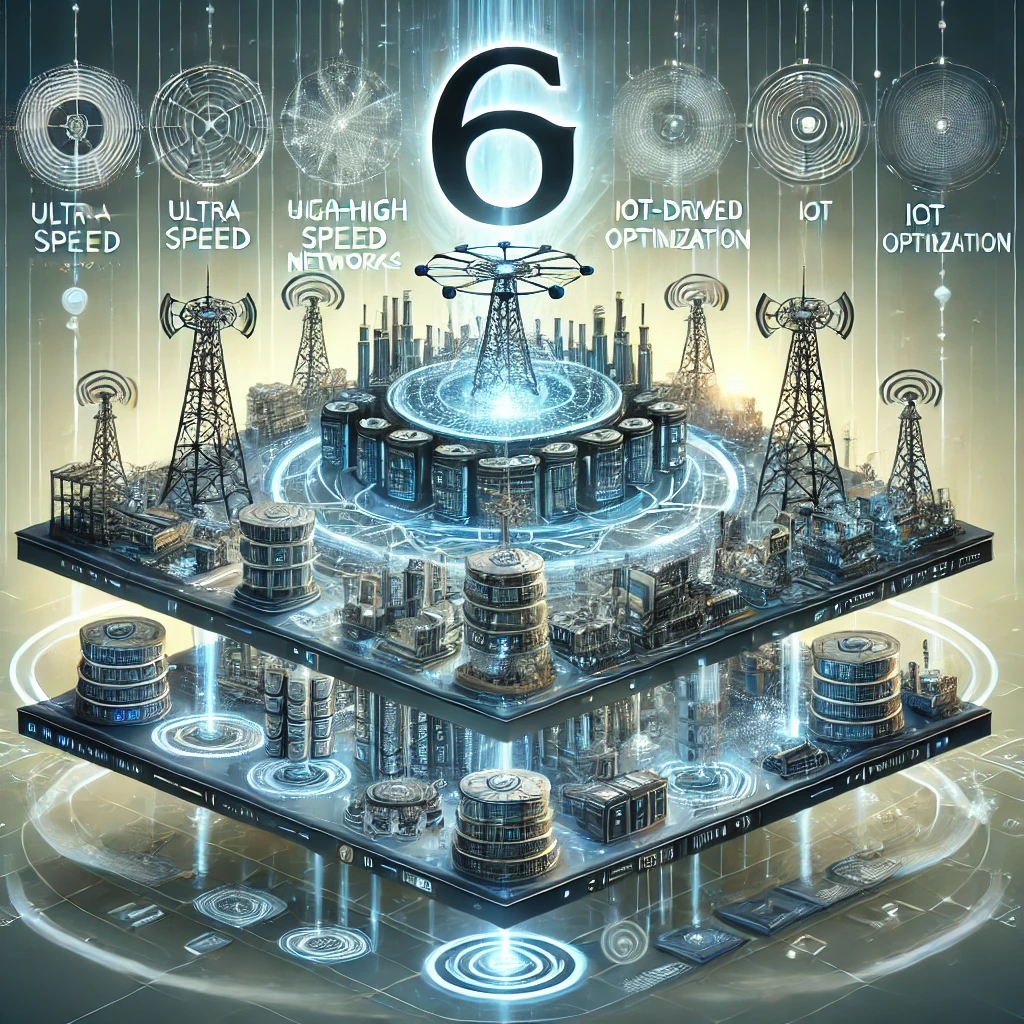6G Research: A Journey from Vision to Reality
History: The Path to 6G
The evolution of mobile networks has progressed rapidly over the past few decades, with each new generation revolutionizing how we communicate and integrate technology into our daily lives. To understand 6G’s potential, it’s helpful to look back at how we arrived here:
- 1G (1980s): Analog, focused on voice communication.
- 2G (1990s): Digital communication was introduced, enabling SMS and basic data transmission.
- 3G (2000s): More advanced data transmission allowed internet access and multimedia services.
- 4G (2010s): Laid the groundwork for today’s connected society with faster data speeds, streaming, and the beginning of IoT (Internet of Things).
- 5G (2020s): The first phase of “faster internet for everyone,” with improved speed, latency, and capacity for a large number of connected devices and smart systems.
While 5G is still being deployed globally, researchers and tech companies are already looking forward to the next generation of mobile networks—6G. The aim is to build on the advancements made with 5G and meet the growing demand for performance and capacity in the future.
What 6G Means Today: Vision and Technology Behind It
6G promises a new era of technological possibilities, but research is still in the early stages. Both private companies and research institutions, particularly in Asia (Japan, China, South Korea) and Europe (Nokia, Ericsson, and several European universities), are leading the development. The goal is to launch the first 6G networks around 2030.
Key Technological Focus Areas:
- Extremely High Speeds: 6G aims to reach speeds of up to 1 terabit per second (Tbps), vastly surpassing today’s 5G.
- Lower Latency: Improved latency is crucial for applications requiring instant responses, such as autonomous driving, smart cities, and real-time healthcare.
- Enhanced AI Integration: 6G networks will likely be AI-driven, allowing the network to adapt and optimize itself based on data loads and usage patterns.
- Massive Connectivity Capacity: With more devices than ever, 6G will need to support millions of devices per square kilometer for IoT, drones, and AR/VR technology.
Use Cases and Opportunities:
6G is expected to drive new digital opportunities and use cases:
- Immersive Experiences: With support for VR and AR at entirely new levels, 6G could offer holographic communication and other interactive virtual experiences.
- Autonomous Systems: Enhanced speed and latency will enable 6G to support self-driving cars, remotely controlled factories, and autonomous delivery systems more reliably.
- Digital Twins: 6G can be used to create exact virtual representations of physical objects or environments, such as factories, where digital twins can predict maintenance needs in real time.
Future Challenges and Opportunities with 6G
6G’s potential comes with challenges. Higher frequencies, as planned for 6G, have shorter range and require new technological solutions to spread the signal effectively, especially in densely populated areas. Additionally, substantial investments in infrastructure and research will be necessary.
Future Outlook for 6G: What Can We Expect?
The first 6G services are expected to roll out around 2030, but full coverage and availability may take several years beyond that. By combining 6G with AI and edge computing, we are likely to see even smarter and more dynamic systems than ever before.
It’s likely that 6G, like previous generations, will transform how we live, work, and interact. We can expect 6G to contribute to an even more connected world where the lines between physical and digital experiences are increasingly blurred.

6G Technology Fact Box
- Expected Launch: Around 2030
- Speed: Up to 1 terabit per second (Tbps), vastly faster than 5G
- Key Features:
- Ultra-Low Latency: Near-instant response times, crucial for autonomous systems
- AI-Driven Networks: Intelligent self-optimizing networks based on usage and data patterns
- Massive Connectivity: Supports millions of devices per square kilometer
- Potential Applications:
- Holographic Communication: Enables immersive, interactive virtual experiences
- Autonomous Systems: Reliable support for self-driving cars, remote factories, and autonomous drones
- Digital Twins: Real-time virtual replicas of physical systems for maintenance and monitoring
- Regions Leading Development: Primarily Asia (Japan, China, South Korea) and Europe (Nokia, Ericsson)
news via inbox
stay informed





